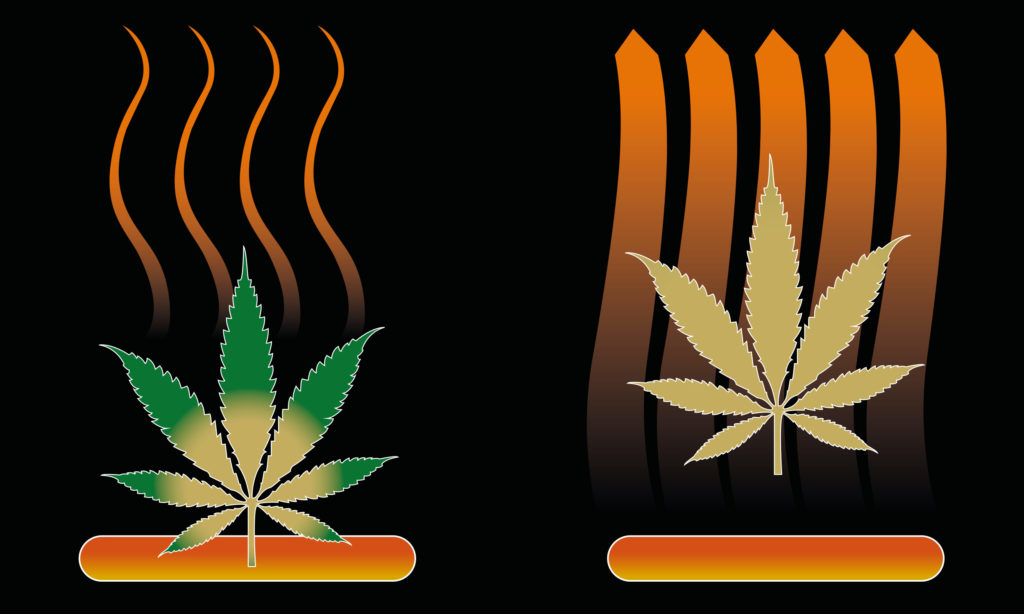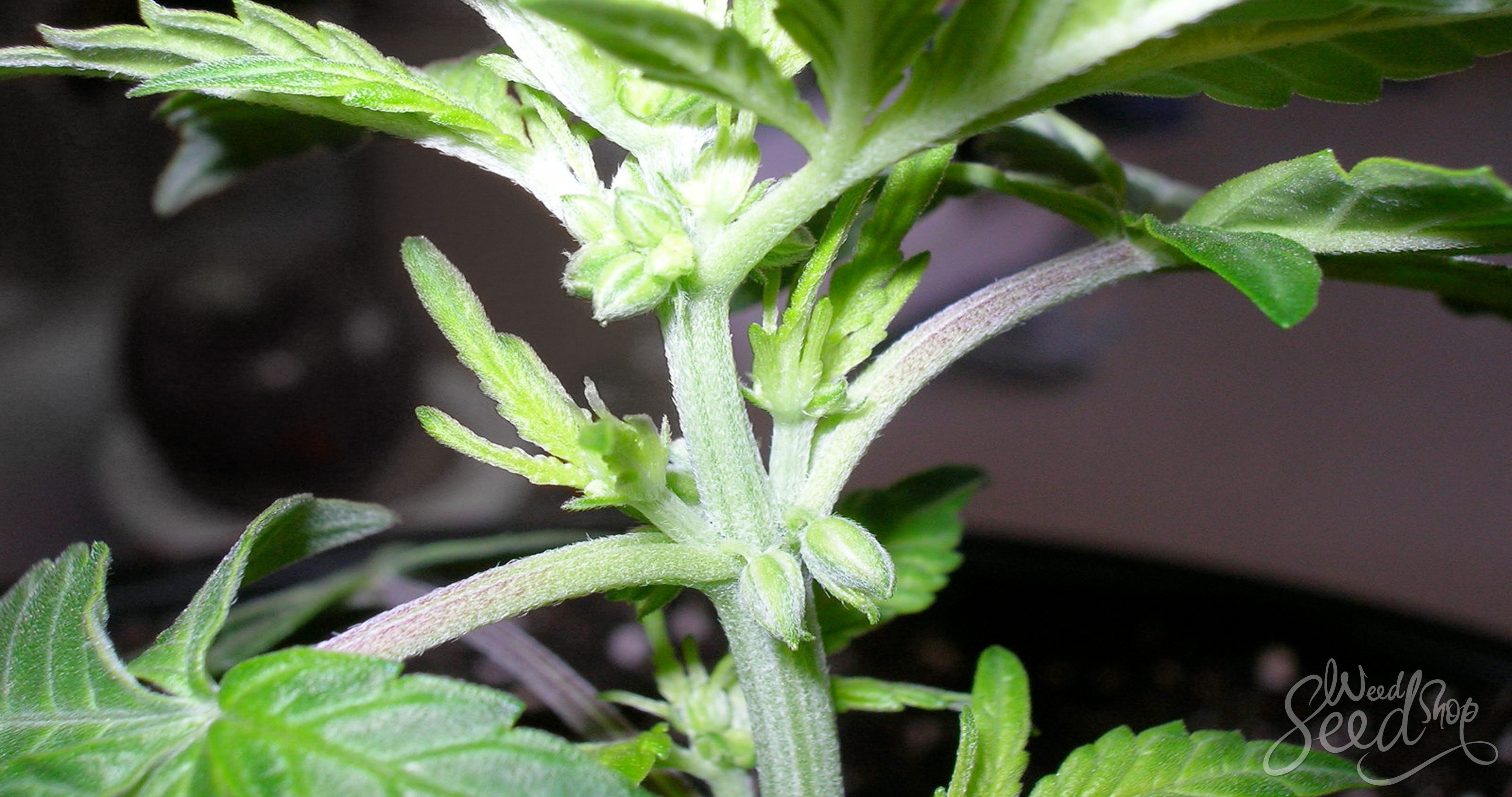Vaporizers are not a “one size fits all” type of smoking apparatus, so knowing what’s out there helps in making a decision when buying one. Each vaporizer works in a different way and gives a different kind of experience. Are you ready to take the plunge into the world of vaporising instead of smoking? This is where to start!
If you have decided that you would like to go with vaporizing weed rather than smoking it, it also pays to know how a vaporizer works. This helps you understand exactly what is going into your body, and how it turns from your fluffy green bud into a thick, cannabinoid-rich water vapor. Having an understanding of this will make you better prepared to choose a vaporizer, and of course makes you more knowledgeable as a cannabis and vaporizer connoisseur.
Vaporizers work by way of heating the cannabis to a temperature that is warm enough to vaporize the weed, but is not as hot as what is required for burning. As a result, the weed gives off a vapor rather than a smoke, and this is what you eventually end up inhaling into your lungs. A vaporizer generally heats up weed to a temperature of 200 degrees Celsius, just enough to create vapor but not enough to burn the plant material that is in your vaporizer.
Despite the fact that all vaporizers look different and come in many different shapes and sizes, the primary function of them is all the same. It is either using electricity or heat to heat up the weed to a point where it can vaporized within the vaporizer, and then is transported through a tube into your body.
Convection vs. Conduction

There are two primary ways in which weed can be vaporized in general, and they are known as convection and conduction. These are generally the two designs that can be found in portable vaporizers, although tabletop vaporizers also work in a similar way. Conduction technology is the first technology that was brought to the creation of vaporizers, and after convection was applied. This means that most newer, more expensive vaporizers use the convection system, but both have their advantages and disadvantages.
In both cases, the heat that is created by the vaporizer releases the essential oils in the cannabis, and together with heat this creates a water vapor that is full of these essential oils. However, both release these essential oils in different ways, producing a different result and a different experience.
So, conduction was the first method that was applied to vaporizers, and it works by applying heat directly to the plant material in order to vaporize it. This means that the cannabis in the vaporizer is already touching something hot, and this is how the vapor is created. The downside to this method is that only the part of the plant that is touching the hot surface ends up being vaporized, whereas the rest is left mostly untouched. This means the user has to sometimes move the weed around the chamber during the vaping process to make sure that all the parts of the cannabis are vaporized. Turning up the heat of the vaporizer does encourage more of the plant material to be vaporized, but then the user runs the risk of burning what is inside.
The second method is convection. This is where the hot surface and the weed are stored in two different chambers within the vaporizer. Hot air is then blown from the heat source over the weed. This means the plant material is not in contact with anything hot at any time, other than the hot air circulating through it while you vaporize. This allows the heat to be much more evenly dispersed over the plant matter, allowing it to reach all the parts of the plant, even right in the middle of the plant matter you are using. This is a better option for a better vaporizing experience, but this means that these models are generally more expensive to purchase than those using the conduction method.
How to use a vaporizer
None of the processes just described actually take place until you begin to draw from the vaporizer. Only tabletop vaporizers do the vaporizing before the user is drawing hits, but for all portable vaporizers, the process is simultaneous with you inhaling. Every vaporizer reacts differently when you take hits, and some are easier to hit than others. It is for this reason that choosing a vaporizer can be tricky and largely depends on how you want to hit the thing.
In fact, everything that has just been described is the process by which a vaporizer works for any herb or plant material you put into it. That means if there are herbs in your garden or even aromatic flowers that you like to smoke, you can vaporize them, and this is tremendously healthier for you. You can even try mixing your green herb with some other flowers in a vaporizer and see how the flavor and effect work out for you. In any circumstance, it is just water vapor containing the essential oils of these things that make it into your body!

Choosing a vaporizer that works for you
Although it is more expensive to buy a vaporizer than it is to buy a packet of Zig Zags and get on with it, it provides what could be a healthier and happier cannabis experience for you. Now that you know the difference between smoking and vaporizing and exactly how a vaporizer works, it might be time to start deciding which vaporizer you are going to choose.
The personal needs of each person are so important when considering whether to purchase a vaporizer, because different people are looking for different things out of their vaporizer. Using cannabis is an extremely personal experience, and there’s no reason why choosing your paraphernalia should be any different.
There are a number of different types available to use, and different ones will serve people differently. Some vaporizers accept plant matter directly into them and others use extracts. The vaporizer you choose is going to rely heavily on your own personal cannabis use and exactly what form of weed you generally prefer to use. The next article in this series is going to help you choose which vaporizer is going to be the most suitable for your weed needs!









Very good stuff ??
Very good stuff.
So informative and easy to follow. Love it.